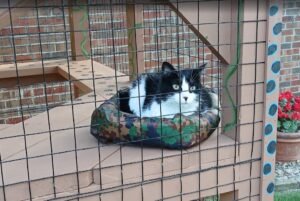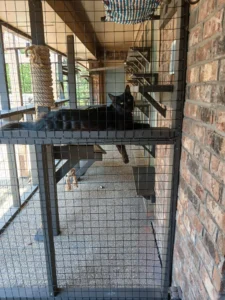Unlocking the Feline Mind: Gaining insight into cats’ inner lives
Cats have baffled people for centuries. These mysterious animals, which are revered in ancient cultures and adored in contemporary homes, balance independence and affection, curiosity and prudence. But what’s actually going on behind those quivering whiskers and mesmerizing eyes?
We are now starting to understand the feline mind, and it is more sophisticated and intelligent than we could have ever dreamed, thanks to expanding studies in animal behavior and neuroscience.
The Meow’s Brain
Despite its small size, the structure of the feline brain is 90% that of the human brain. Cats, like humans, have a cerebral cortex, which is the part of the brain involved in emotion, memory, and decision-making. Their remarkable capacity for learning and occasionally uncanny intuitive behavior can be explained by this. However, cats evolved as solitary hunters, unlike dogs. Instead of social cooperation, their intelligence evolved around independence, stealth, and self-preservation.
The Reasons Behind Cat Behavior
Have you ever wondered why your cat runs out of the room like it’s on fire or stares off into space?
These actions have a strong instinctual foundation:
Zoomies: An innate desire to hunt and play is frequently the source of energy outbursts.
Abrupt Mood Changes: Cats have extremely sensitive senses. To them, something as insignificant as a noise or a smell may seem overwhelming.
Not only is purring a sign of contentment, but it also aids cats in self-soothing when they are in pain or under stress.
Communication: The Language of Silence
Meowing is only used to communicate with humans; cats do not meow at one another in the wild. Whether it’s a courteous request for food or a full-fledged opera of “feed me now!” they’ve learned to modify their vocalizations to capture our attention.
However, they also “speak” in a variety of other ways:
Flicks of the tail indicate alertness or annoyance.
The cat equivalent of a trustworthy kiss is slow blinking.
Body posture and ear position can convey anything from aggression to curiosity.
The Cat’s Mind’s Environment
A happy cat is one that is mentally stimulated. CATS, ramps, scratch posts, and climbing areas are examples of environmental enrichment that can help with that. These lessen anxiety and stop destructive behavior in addition to satisfying their inclinations to stalk, climb, and rest at elevation.
By recognizing their needs, honoring their uniqueness, and designing secure, stimulating environments where they can flourish, we as cat lovers, builders, and caregivers unlock the feline mind.
To embrace the mystery and magic of what makes a cat, a cat, is to unlock the feline mind. They are intelligent, emotional, and instinctive beings with a secret world that is just waiting to be discovered.
And when we spend time comprehending them? At that point, the human-cat bond becomes irreversible.





